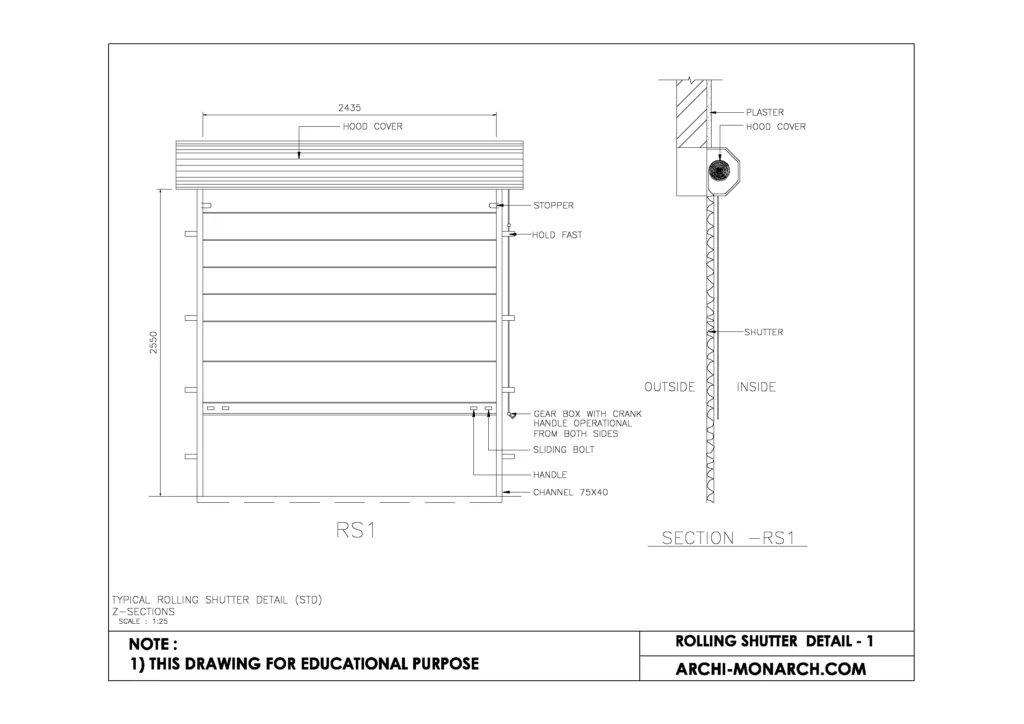A rolling shutter is a type of window or door shutter that consists of several horizontal slats or louvers that are connected to a rolling mechanism.
When the shutter is opened, the slats roll up and stack at the top of the opening. When the shutter is closed, the slats roll down and cover the opening.
Rolling shutters can be used to provide privacy, security, or to block out light or noise. They are often used in commercial and industrial buildings, but can also be used in residential buildings. Some rolling shutters are manual, while others are operated by an electric motor.
If you want to know about the staircase detail or toilet detail or miscellaneous detail, please click the link.
Image of rolling shutter detail and downloadable (in DWG) link below

Rolling shutter detail drawing – 1
This drawing shows a cross section of a wall with a rolling shutter installed. The shutter consists of a frame that is attached to the wall, a rolling mechanism that is housed within the frame, and the slats or louvers that make up the shutter.
The rolling mechanism consists of a drum, a spindle, and a crank handle or motor. The slats are attached to the spindle and roll up and down as the spindle turns.
The drawing also shows how the shutter is supported by brackets and how it seals against the wall when it is closed.
Here are some additional details that may be included in a rolling shutter detail drawing:
- Guides: The guides are the tracks that the slats roll up and down in. They may be made of aluminum or steel and are typically attached to the frame of the shutter.
- End locks: The end locks are mechanisms that hold the slats in place when the shutter is closed. They may be located at the top and bottom of the shutter and may be engaged manually or automatically.
- Weatherstripping: Weatherstripping is a sealing material that is used to help prevent drafts and water infiltration around the edges of the shutter. It may be made of foam, rubber, or other materials and is typically applied to the edges of the slats or the frame.
- Hardware: The hardware includes the various components that hold the shutter together and allow it to function. This may include screws, nuts, bolts, and other fasteners.
- Electrical components: If the shutter is motorized, it will require electrical components such as a motor, control panel, and wiring. These components may be located within the frame of the shutter or in a separate control box.
Our tips to help you improve your architectural rolling shutter detailing.
